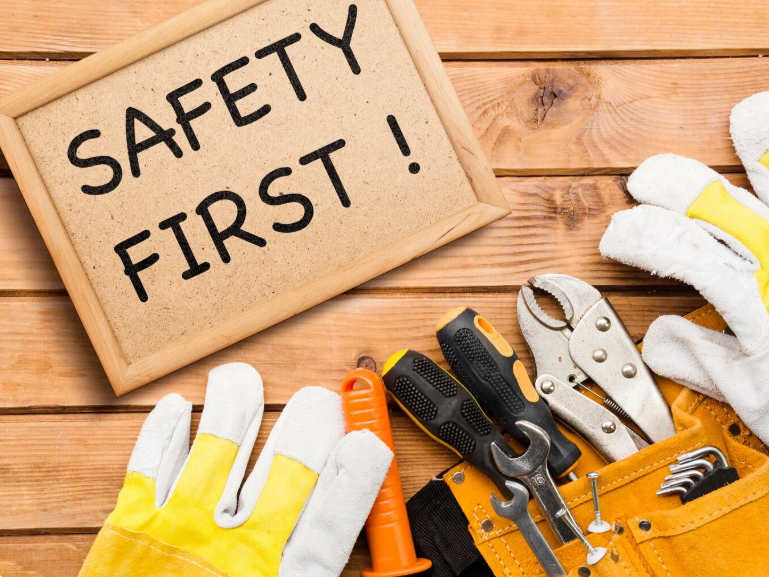“An ounce of prevention is worth a pound of cure.” – Benjamin Franklin
We’ve all seen the signs: “Safety First,” “Hard Hat Area,” or “Caution: Slippery Floor.” But beyond these everyday warnings, there exists a vast and structured system of safety rules, procedures, codes, and practices — all designed to do one crucial thing: protect people.
In this blog, we’ll dive deep into why safety regulations aren’t just corporate red tape, but an absolute necessity across industries, homes, and public places. Whether you’re managing a manufacturing plant, working in a lab, or even running a remote office — understanding the need for safety rules is a must.
🧱 Table of Contents
- What Are Safety Rules, Procedures & Codes?
- Why Do We Need Safety Regulations?
- Key Areas That Demand Safety Rules
- Consequences of Ignoring Safety
- Safety Procedures vs. Safety Rules — What’s the Difference?
- The Role of Safety Codes & Standards
- Implementing Safety in the Real World
- Final Thoughts
📘 What Are Safety Rules, Procedures & Codes?
Before we go any further, let’s clarify what each of these terms means:
- Safety Rules – These are general guidelines or policies that apply to everyone in a given environment. Example: “Always wear safety goggles in the lab.”
- Safety Procedures – These are step-by-step instructions on how to carry out specific tasks safely. Example: The process for safely operating a forklift.
- Safety Codes – These are formalized, often legally binding standards (e.g., fire codes, building codes) developed by organizations like OSHA, NFPA, or ISO.
In essence, these elements work together to reduce risk, prevent accidents, and save lives.
🛑 Why Do We Need Safety Regulations?
The simple answer? To protect people, property, and the environment.
But let’s unpack that a bit more:
1. To Prevent Injuries and Fatalities
Accidents at the workplace or home can have devastating consequences. According to the International Labour Organization (ILO), 2.3 million people die each year from work-related accidents or diseases. That’s more than 6,000 deaths every single day.
2. To Ensure Legal Compliance
Governments around the world impose strict regulations for worker and public safety. Ignoring these can lead to lawsuits, fines, or even shutdowns.
3. To Maintain Business Continuity
An accident at a workplace can bring operations to a halt. A small fire, chemical spill, or injury can mean days or weeks of lost productivity.
4. To Build Trust
Customers, employees, and the public are more likely to trust a company or organization that demonstrates strong safety practices.
🏭 Key Areas That Demand Safety Rules
Safety isn’t one-size-fits-all. Different environments demand different precautions. Here’s a breakdown:
🏗️ 1. Construction Sites
- Heavy machinery, high elevations, and dangerous tools make this sector high-risk.
- Hard hats, harnesses, and PPE are non-negotiable.
🧪 2. Chemical Laboratories
- Flammable, toxic, or reactive substances require strict storage and handling procedures.
- Safety Data Sheets (SDS) and emergency eyewash stations are mandatory.
🔌 3. Electrical Work
- One wrong move can lead to electrocution.
- Lockout-tagout (LOTO) procedures and insulation codes are critical.
💻 4. Offices and Remote Workspaces
- Yes, even here! Ergonomic guidelines and electrical safety for office equipment can reduce risks like repetitive strain injuries or short circuits.
🚜 5. Manufacturing & Industrial Plants
- With conveyor belts, robotics, and high-speed operations, manufacturing requires automated emergency stop systems, training, and hazard assessments.
⚠️ Consequences of Ignoring Safety
Ignoring safety regulations isn’t just irresponsible — it’s costly.
💸 1. Financial Penalties
Companies can be fined thousands or even millions for violations.
🩺 2. Medical Costs
Treating injuries or providing compensation to workers can become a financial burden.
🧑⚖️ 3. Legal Action
Negligence may lead to lawsuits, imprisonment, or cancellation of operating licenses.
🏚️ 4. Damage to Reputation
Trust, once lost, is hard to rebuild. One accident can destroy a company’s image.
🔍 Safety Procedures vs. Safety Rules — What’s the Difference?
While they may sound interchangeable, they serve different roles:
| Feature | Safety Rules | Safety Procedures |
|---|---|---|
| Purpose | Set boundaries and expectations | Guide specific actions |
| Example | “Always wear a helmet.” | “Steps to safely clean chemical spills.” |
| Nature | Broad and universal | Task-specific and detailed |
| Compliance | Ongoing behavior | Operational guidance |
Both are essential — one builds culture, the other ensures execution.
🧾 The Role of Safety Codes & Standards
🔥 Fire Safety Codes (e.g., NFPA)
- Define fire extinguisher placement, evacuation routes, and sprinkler systems.
- Help design buildings and workplaces to prevent or contain fires.
🏢 Building Codes
- Ensure structural integrity and human safety in case of earthquakes, storms, or accidents.
🧯 OSHA Regulations (Occupational Safety and Health Administration)
- Covers everything from chemical exposure limits to machine guarding.
🌐 ISO Standards
- The ISO 45001 standard provides a framework for occupational health and safety (OHS) management systems globally.
These codes ensure that everyone plays by the same rules — reducing risk and improving accountability.
🛠️ Implementing Safety in the Real World
Great — we know safety is essential. But how do we actually implement it?
Here’s a practical roadmap for organizations:
✅ 1. Risk Assessment
- Identify potential hazards in your environment.
- Rate the likelihood and impact of each risk.
📜 2. Document Policies and Procedures
- Draft clear, simple-to-follow rules.
- Make sure every procedure is accessible and translated (if needed).
🎓 3. Training and Awareness
- Conduct onboarding safety sessions.
- Use mock drills, safety signs, and toolbox talks.
🧪 4. Provide the Right Tools
- From helmets to spill kits to ergonomic chairs — give people what they need to stay safe.
📊 5. Monitor & Audit Regularly
- Safety isn’t “set and forget.”
- Regular audits and incident reporting help catch issues early.
🧠 Final Thoughts
Safety rules, procedures, and codes aren’t just about avoiding fines or ticking compliance boxes. They are the invisible threads that hold the fabric of any operation together — protecting life, enabling productivity, and building long-term trust.
Let’s stop seeing safety as a hurdle and start seeing it as a culture, a responsibility, and ultimately — a lifesaver.
🙌 Did You Find This Useful?
If this article helped you understand the importance of safety rules and procedures, consider subscribing to our blog. We post regularly about safety insights, workplace best practices, and regulatory updates you need to stay compliant and confident.
📩 Subscribe now and never miss an update!
📣 Got questions or want to share how your organization implements safety? Leave a comment below — we’d love to hear from you!
Tags: #WorkplaceSafety #SafetyRules #OccupationalHealth #SafetyCodes #Compliance #RiskManagement
🔁 Readers also enjoyed these blog posts:
- Safety Management’s Role: The Unsung Hero Behind Every Successful Organization
- Safety Management and Its Responsibilities: Protecting People, Preventing Hazards, and Promoting a Culture of Care
- Benchmarking for Safety Performance: A Key to Continuous Improvement
“Start Your Website Journey Today – Exclusive Hostinger Discounts!”

Turn Any Idea into Viral,
Jaw-Dropping AI Videos in Seconds!










